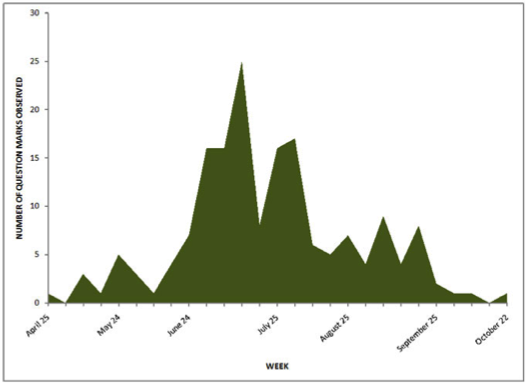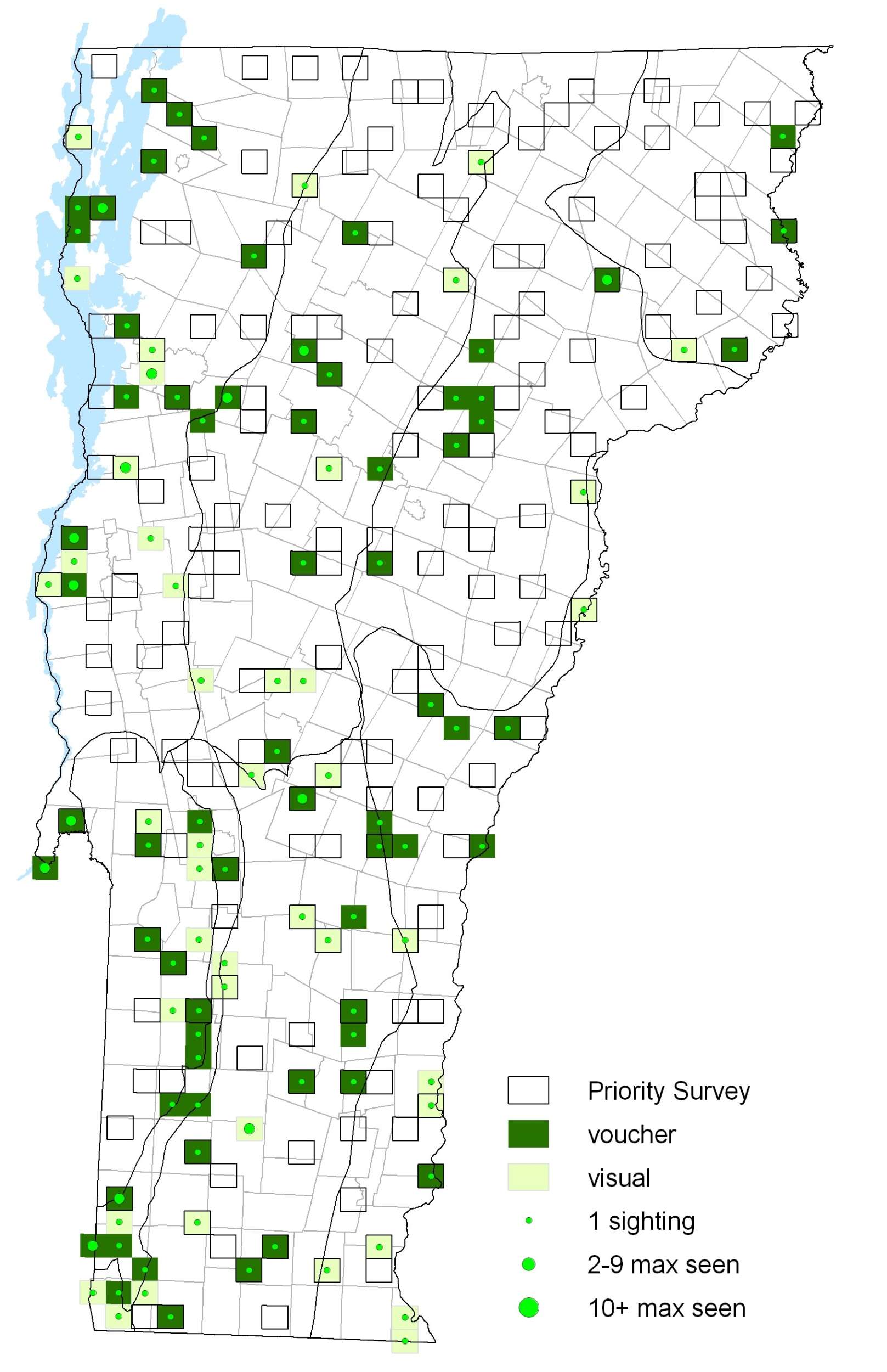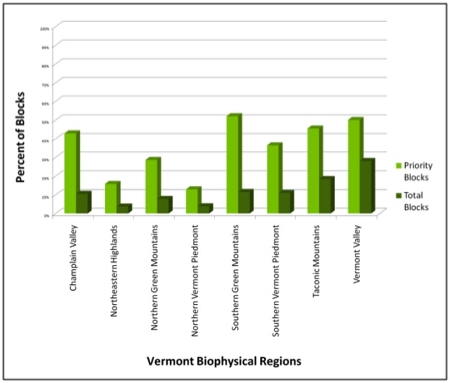|
Resident Conservation Status North American Range |
A large anglewing of temperate, deciduous woodlands, its common name reflects the silver punctuation mark on the ventral hindwing. They are migrants with large flights along the coast and a more diffuse spring migration northward. Some individuals can overwinter in north.
Adults bask in the morning. Adults feed at decaying fruit, sap, carrion, mud, sap and sometimes nectar. Males very territorial and will chase after moving objects.
Identification
The largest anglewing. Forewing hooked; upperside is red-orange with black spots. Upperside hindwing of summer form is mostly black with a short tail; winter form has much orange and a longer, violet-tipped tail. Underside is light brown; hindwing with silver question mark in center.
Flight
Two generations each year, a summer form flies from late June through August and a winter form flies in September and October. Most Winter form individuals apparently migrate south, but some overwinter. Extreme dates: 2 May 2004 in Grand Isle (D. Hoag) and 22 October 2007 in Dummerston (K. Hemeon).
Distribution and Habitat
During VBS reported from across the state, but more prevalent in southern areas and valleys in north were more temperate, deciduous forests occur. In Northeast Highlands, for example, only found in the Connecticut River valley. They prefer open spaces near deciduous woods such as city parks, fence rows, shorelines and forest edges. Hostplants are several species of elms (Ulmus), hackberry (Celtis) and some nettles (Urtica).







